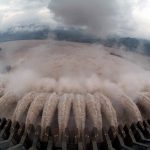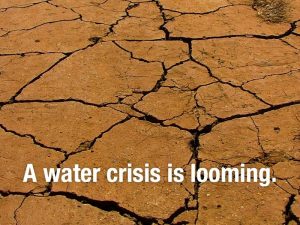Rainwater harvesting is need of the hour
 Every monsoon, millions gallons of water goes in the sea directly. Which if stored, can sort out the glaring water requisite. Experts have advised rainwater harvesting on various platforms. But, many housing societies in the city are using the technique for combating water shortages, their action is credible.
Every monsoon, millions gallons of water goes in the sea directly. Which if stored, can sort out the glaring water requisite. Experts have advised rainwater harvesting on various platforms. But, many housing societies in the city are using the technique for combating water shortages, their action is credible.
So what is rainwater harvesting?
The concept is to accumulate the rainwater when it falls. A large portion of rainwater that falls on the earth’s surface, runs-off from streams to rive rs and finally to the sea. An average of 8% of the total rainfall recharges the ground water table. Hence, most of the rainfall is wasted through surface run-off. The technique of RWH involves conserving rain from catchment surfaces such as roof-tops, plain and sloping ground surface. The rainwater that falls on these areas is then diverted into ponds, vessels or underground tanks for storage.
rs and finally to the sea. An average of 8% of the total rainfall recharges the ground water table. Hence, most of the rainfall is wasted through surface run-off. The technique of RWH involves conserving rain from catchment surfaces such as roof-tops, plain and sloping ground surface. The rainwater that falls on these areas is then diverted into ponds, vessels or underground tanks for storage.
 I think, it’s high time, if we don’t act now the water crisis might create mayhem. It is the need of the hour – the housing complexes should have proper rain water harvesting system and draw groundwater for non-drinking purposes. Let’s assume, even if water from bore-wells is us
I think, it’s high time, if we don’t act now the water crisis might create mayhem. It is the need of the hour – the housing complexes should have proper rain water harvesting system and draw groundwater for non-drinking purposes. Let’s assume, even if water from bore-wells is us ed for toilet flushing (50 lpcd) and cleaning (10 lpcd), the load on the piped water supply will come down to 50%. This means that the same piped water supply will be sufficient for double the population. Recycling of the water used for washing is possible by re-using it for watering the garden will further bring down the load on the overworked system. Desalination of sea water will eliminate the need to set up newer projects that require transporting water from 100km at a high capital cost; it will also make that resource available to other needy water scarce areas
ed for toilet flushing (50 lpcd) and cleaning (10 lpcd), the load on the piped water supply will come down to 50%. This means that the same piped water supply will be sufficient for double the population. Recycling of the water used for washing is possible by re-using it for watering the garden will further bring down the load on the overworked system. Desalination of sea water will eliminate the need to set up newer projects that require transporting water from 100km at a high capital cost; it will also make that resource available to other needy water scarce areas
Johan Rockstrom, internationally acclaimed environmentalist and executive director of Stockholm Environment Institute during his visit to s Symbiosis International University as a part of ‘Sweden India Nobel Memorial Quiz’ spoke to Indian Express on seriousness of RWH. In his interview he said that the world has to get ready to face climate changes which pose serious threat to water resources; as there is inconsistency in the rains. We  are already witnessing long dry spells in some parts of the world while other parts experience floods. Though there is unevenness in rain pattern, the amount of water has remained almost the same. The need is to tap this available water effectively.
are already witnessing long dry spells in some parts of the world while other parts experience floods. Though there is unevenness in rain pattern, the amount of water has remained almost the same. The need is to tap this available water effectively.
He proposed rainwater harvesting as one of the viable option as it would also provide fresh water for use. To meet the demand of its rising population, India will not only have to manage its water resources well, but will also have to see that the quality of water is good, both for drinking as well as agriculture purposes. In terms of river linking project in India, he said though it faces some disadvantage as it could pose serious environmental issues, it should be carried forward as India is already facing crisis situation in water resources.
The eminent expert also said expanding irrigation projects would not help in a great way as there is not much potential for irrigation in future. The rivers are drying up and fresh water resources are reducing. According to Rockstorm, India can lead in the green revolution by using innovative techniques in water management. His institute is doing collaborative research with TERI (The Energy Resource Institute) and CEC (California Energy Commissi on) and some good results are established so far. There is lot of funding available at the international level in the area of water resource management; collaborative approach can help develop the innovative techniques.
on) and some good results are established so far. There is lot of funding available at the international level in the area of water resource management; collaborative approach can help develop the innovative techniques.
Lack of awareness is the biggest hurdle in the implementation of rainwater harvesting. Let’s get ready to solve it on war footing.














































